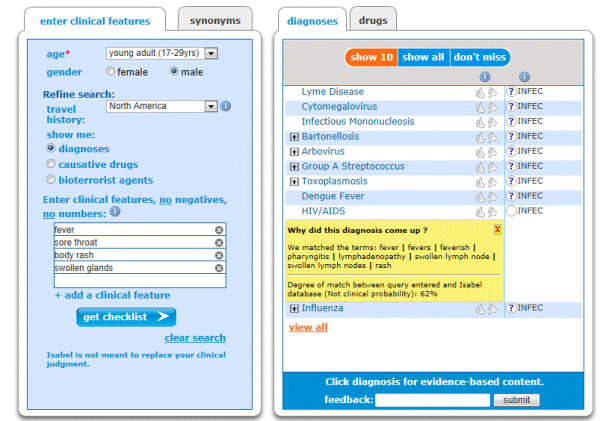- Privacy Policy
- Terms & Conditions
- Contact us
- ©Isabel Healthcare 2025
HIV Infection /AIDS – Where are we now in 2012?
World AIDS Day is on Saturday 1st December 2012 and the theme for this year is “Getting to Zero: Zero new HIV infections. Zero deaths from AIDS-related illness. Zero discrimination”.
The first recognized cases of AIDS (Acquired Immunodeficiency Virus) occurred in the USA in the early 1980’s where people were developing rare opportunistic infections that were resistant to any treatment. The Human Immunodeficiency virus (HIV) was discovered soon afterwards and it was found HIV causes AIDS.
What is HIV/AIDS?
HIV is a virus most commonly caught by having unprotected sex, sharing infected needles and other injecting treatment to inject drugs. The virus attacks the immune system and weakens your ability to fight infections and disease. AIDS is the final stage of HIV infection when your body can no longer fight life-threatening infections. There is no cure for HIV but drugs are available which enable most people to live a long and healthy life.
How is HIV/AIDS spread?
HIV is found in the bodily fluids (semen, vaginal fluids, blood, inside the anal passage and in breast milk) of an infected person. HIV cannot be spread by saliva alone but it can be spread if the saliva contains other bodily fluids or blood. The most common way of getting HIV in the UK is from unprotected sexual contact with a person who has HIV. Other ways include sharing needles and drug equipment, transmission from a mother to baby during birth or from breast feeding if the mother is HIV infected.
Statistics of HIV:
There are 33.3 million people in the world infected with HIV. 22.4 million of these people are in sub-Saharan Africa and the Caribbean is the second most affected region in the world. In the developed world, the USA has the most severe HIV epidemic.
Symptoms of HIV:
80% of people who become infected with HIV experience a short flu-like illness or known as a seroconversion illness that occurs 2 to 6 weeks after infection. Symptoms of this seroconversion illness can include:
- fever
- sore throat
- body rash
- tiredness
- joint pain
- muscle pain
- swollen glands
These symptoms can be seen in many other illnesses like flu and colds but if a patient experiences several of these symptoms and feels they have been at risk of HIV infection then they should be tested for HIV. It should be remembered that once a person has been in contact with HIV it can take up to 3 months for the HIV test to show a positive result if the person is infected. Once the seroconversion illness has happened a person may not show any other symptoms for up to 10 years.

Differential diagnosis of diseases occurring with similar symptoms to those the seroconversion illness can present with.
If left untreated HIV weakens the ability to fight infection and a person becomes vulnerable to serious illnesses. This stage of illness if known as AIDS or late-stage HIV infection. A person experiencing late-stage HIV infection may exhibit symptoms of:
- persistent tiredness
- night sweats
- weight loss
- persistent diarrhea
- blurred vision
- dry cough
- shortness of breath
- fever
- swollen glands for longer than three months
At this stage the person is at risk of developing life-threatening diseases like tuberculosis, pneumonia and some cancers. Many of these can be treated and if the person is on HIV medication then this increases their ability to fight these infections.
Where are we in 2012?
- Russia has reported a 12% rise in HIV infection which amounts to around 200 new cases each day although elsewhere across the world the number of new infections in all adults infected by all routes of transmission have stayed stable for the past four years.
- In the UK the number of gay and bisexual men being diagnosed with HIV has reached an all-time high according to the Health Protection Agency. There has been a worrying trend since 2007 with more and more new cases each year in this transmission group. In 2011, nearly half of the new cases diagnosed in the UK which amounted to 6,280 people were from the men who had sex with men group.
- In the USA, more than half the young people infected with HIV are not aware of it. Young people aged 13 to 24 years in the USA account for 26% of all new infections.
- The United Nation’s has recently said it believes there has been a further drop in new HIV infections among children worldwide. In 2011, there were 330,000 new cases worldwide which was 24% lower than the new infection rate in children in 2009. Some countries within sub-Saharan Africa have made impressive efforts in reducing new infection rates among children as programmes being implemented to help this problem are having some effect.
However there is no room for complacency as there is still plenty more to do across reducing HIV infection in all transmission groups and age populations to reach “Zero new HIV infections. Zero deaths from AIDS-related illness. Zero discrimination”.

Mandy Tomlinson
Mandy has worked for Isabel Healthcare since 2000. Prior to this, she was a Senior Staff Nurse on the Pediatric Infectious disease ward and high dependency unit at one of London's top hospitals, St Mary’s in Paddington which is part of Imperial College Healthcare NHS Trust. Her experience in the healthcare industry for the past 33 years in both the UK and USA means she's a vital resource for our organization. Mandy currently lives and works in Scottsdale, Arizona.
Subscribe Here!
Recent Posts
Isabel DDx Companion with ChatGPT Integration - to help you diagnose even faster
At Isabel Healthcare, we’ve always been driven by one goal: to make clinical reasoning faster,..Virtual Triage: Do more questions lead to better patient outcomes?
One of the common misconceptions related to virtual triage / symptom checker tools is that the more..List Of Categories
- Differential Diagnosis Decision Support
- Differential diagnosis
- Symptom Checker
- Symptoms
- Medical Error
- Patient Disease Information
- Disease
- Clinical Decision Support
- Diagnostic Decision Support
- Isabel 1 Minute Read
- Diagnosis Error
- Diagnosis Skills Cases
- Healthcare Informatics
- Clinical Reasoning
- Evidence-based Medicine
- Medical Education
- Patient Engagement
- Symptom Triage
- Nurse Practitioner Education
- Nursing Decision Support
- Partnership
- Public Health
- COVID-19
- EHR
- Patient Empowerment
- Patient Safety
- rare disease

Start your FREE Trial today
Try the Isabel Pro DDx generator for 30-days - no payment card details required.





